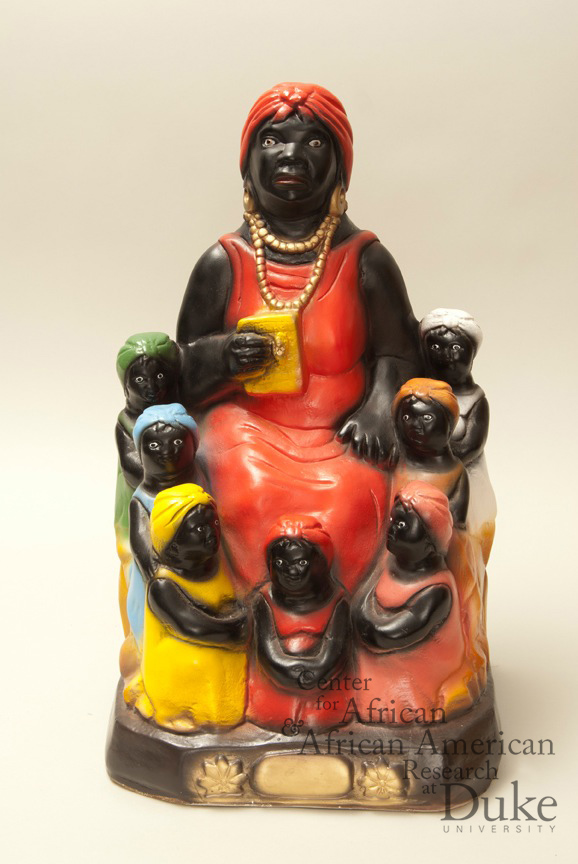





42.0 x 25.0 x 23.5 cm
(centimeters)
16.5 x 10.0 x 9.3 in
(inches)
The Siete Madamas (the Seven Madams) are a class of spirits in Puerto Rico’s version of Espiritismo, a religion found throughout the Caribbean, Central and South America, and in the United States. Although European spiritism emphasized communication with the spirits of family members and renowned figures, in the Western Hemisphere, the religion has great overlaps with both Santería and Palo, two other Afro–Diasporic practices. All three religions have mutually enriched one another with elements inspired not only by Europe but also Africa. Espiritismo practitioners, known as spiritists (espiritistas), are particularly numerous in Brazil, Cuba, and Puerto Rico.
The Madamas constitute a class of spirits separate from those referred to as negros or congos, who are associated closely with Africa and the slave trade. Instead, the Madamas are black spirits who fit somewhere between true “Africans” and more Creolized figures. For instance, Madamas speak a dialect known as bozal which practitioners associate with the broken Spanish of African captives brought to the Spanish-speaking New World. However, the name Madamas is a folk Spanish rendering of the FrenchMadame, perhaps recalling the influx of French immigration to Puerto Rico following the Haitian Revolution of 1791. The dancers of two Afro–Puerto Rican dances—the Bomba of Loíza Aldea and the Plena of Ponce, dress in a manner similar to that of Madamas shown here, providing evidence of dialogue between the dancers and Espiritismo practitioners.
The garb of the figures shown here recalls “mammy” characters popularized in North American blackface minstrel shows and then perpetuated in Vaudeville and Hollywood: black skin, red lips, wide eyes, head wrap knotted in front, and long skirts. The Madamas are known as fonts of wisdom and herbal healing. They also bring good luck. This statue, variations of which have become quite popular in Puerto Rico, features a book in the central figure’s hands. This may indicate a new emphasis on education among Puerto Ricans both at home and in the continental United States.
The bright colors of the Madamas contrast with Espiritismo’s preference for white. The seven figures are sometimes identified with the Seven African Powers, the seven key African orichas, or divinities who are normally presented in tandem with a corresponding set of Roman Catholic saints. The green figure is Ifá, the blue Yemayá, the yellow Ochún, the dark red Changó, the pink Obá, the orange Oyá, and the white Obatalá. Although he hails from Cuba, Mr. Esteban “Steve” Quintana is a Babalocha, or Yoruba priest, who works in Hyde Park, Massachusetts. Upon seeing this figure he pointed out that each of the constituent figures in this statue corresponds to one of the Seven African Powers.
Contact
Sacred Arts of the Black Atlantic Project, Duke University
Box 90091
Durham, NC 27708
Email
jm217@duke.edu